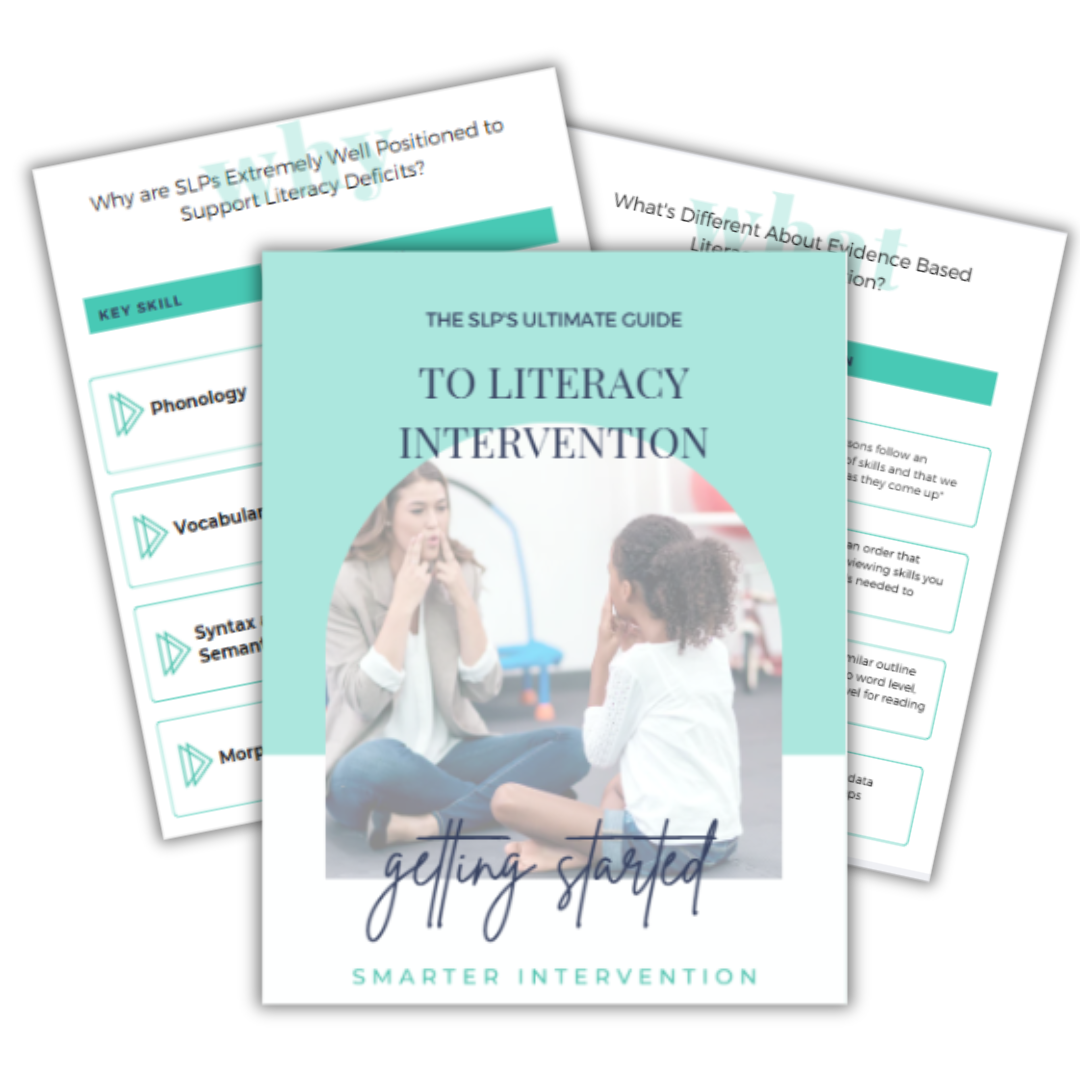Why SLPs are Uniquely Qualified to Support Students with Dyslexia
Many Speech-Language Pathologists (SLPs) are the very first professionals to work with students who later go on to struggle with reading. And yet, when it comes to supporting dyslexia, SLPs often feel underqualified.
But dyslexia is a language-based learning disability.
That means students with early speech and language struggles are often the same ones who eventually need reading intervention.
And when you look closely at what effective dyslexia intervention requires, it becomes clear: SLPs are not only qualified to help… they may be the best professionals to guide these students from start to finish.
The Building Blocks of Dyslexia Intervention
Phonology
Breaking sentences into words, recognizing and producing rhyme, isolating sounds, blending, segmenting, and manipulating sounds — this is the bread and butter of an SLP’s daily work. Reading intervention simply takes these same skills and connects them directly to print.
Sound-Symbol Knowledge
Students with dyslexia often confuse similar sounds like /m/ and /n/, or /p/ and /b/. SLPs already teach students how sounds are produced and how they differ — the only extra step is pairing that knowledge with the grapheme (the written letter or letter pattern).
Morphology
Prefixes, suffixes, and root words build vocabulary, grammar, and comprehension. SLPs already use morphology to strengthen oral language; in reading intervention, that same skill boosts decoding, spelling, and comprehension.
Syntax
Children who struggle to produce grammatically correct spoken sentences will also struggle to write them. SLPs are uniquely equipped to bridge oral and written syntax, helping students connect language structure to writing.
Semantics
At the end of the day, reading is about meaning. Many programs overlook comprehension, but SLPs are experts in building listening comprehension and moving students from basic recall to higher-order skills like inferring and synthesizing.
Why SLPs Are a Perfect Fit
When you map these skills onto the core components of reading, it’s obvious: SLPs already cover nearly every box. The only missing piece is often the order and structure of literacy lessons, making sure skills are taught systematically, sequentially, and cumulatively.
With the right framework, SLPs don’t just belong in dyslexia intervention — they are among the most powerful professionals to lead it.
You already have the expertise. What most SLPs need is simply a roadmap for layering in structured literacy.
And that’s exactly what we created for you.
👉 Download your free SLP’s Ultimate Guide to Literacy Intervention and get the step-by-step structure you need to bring all of your skills together into strong literacy intervention for students with dyslexia.



